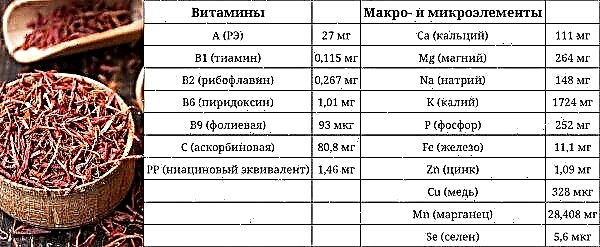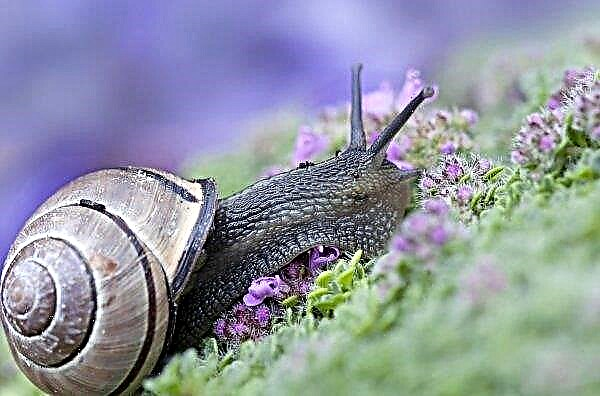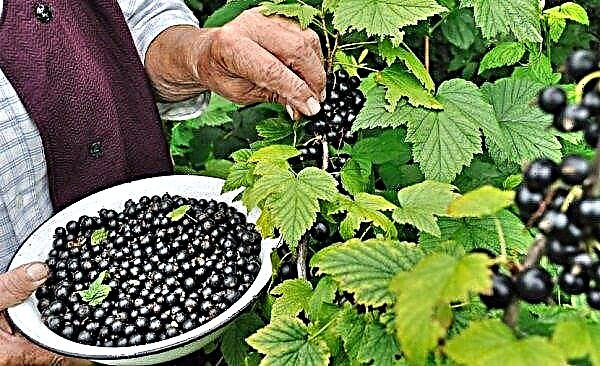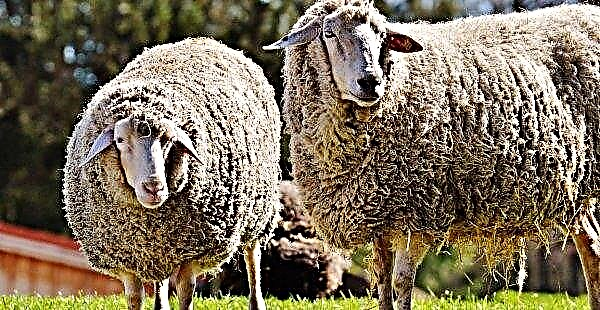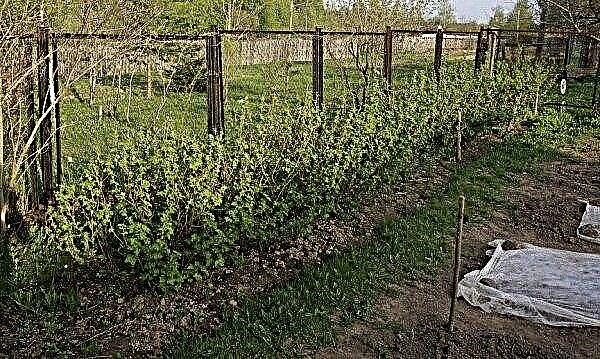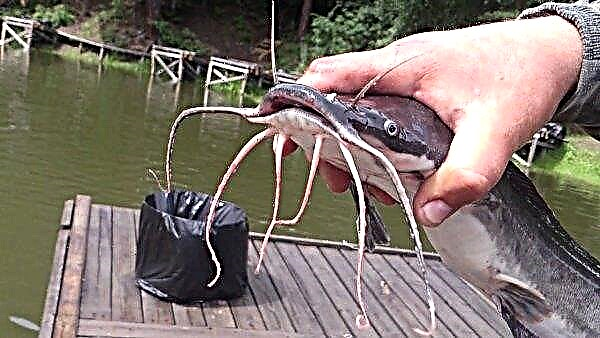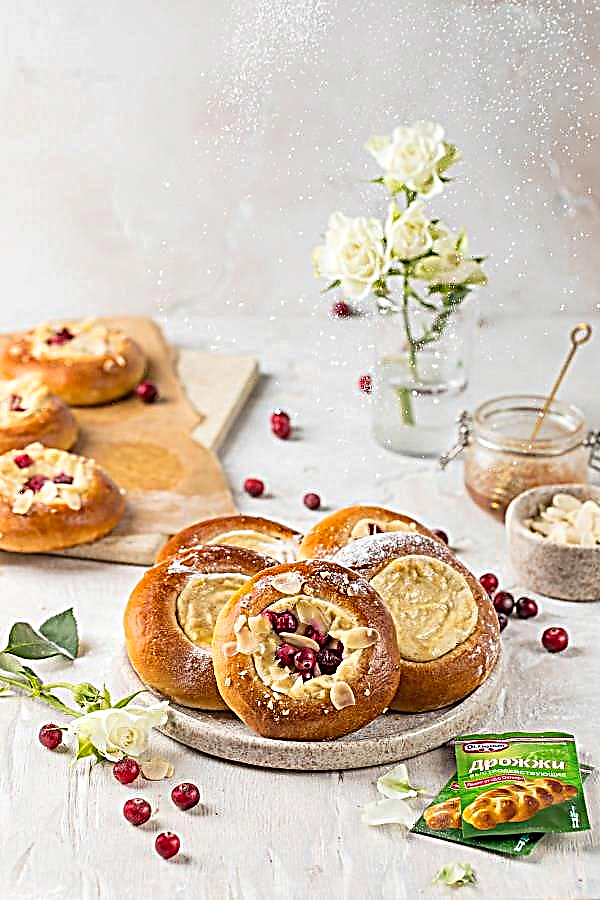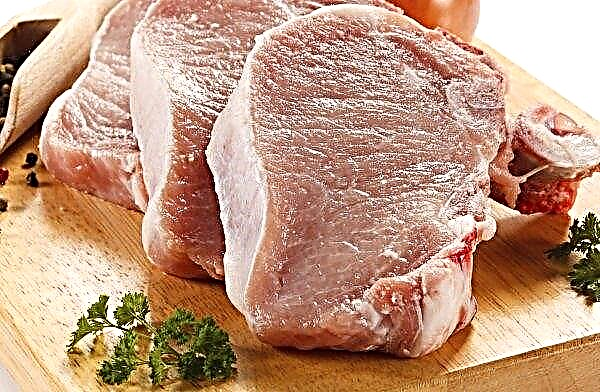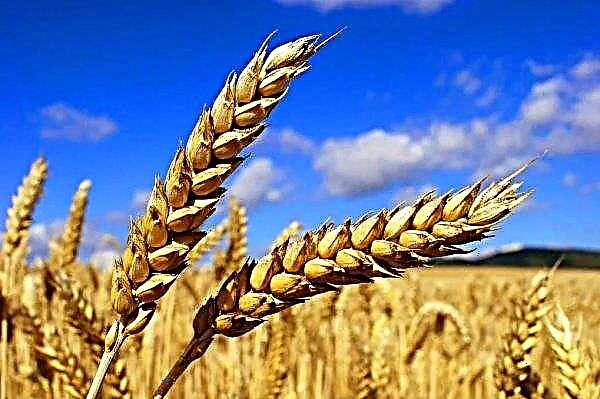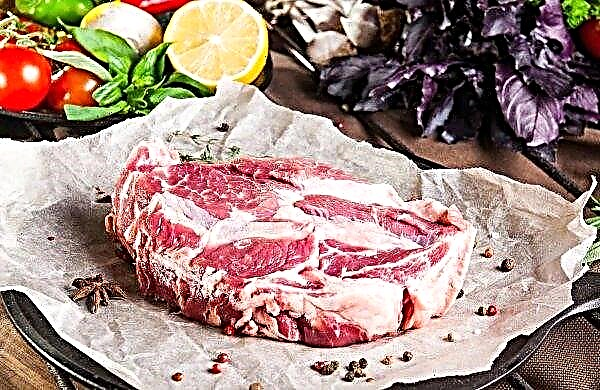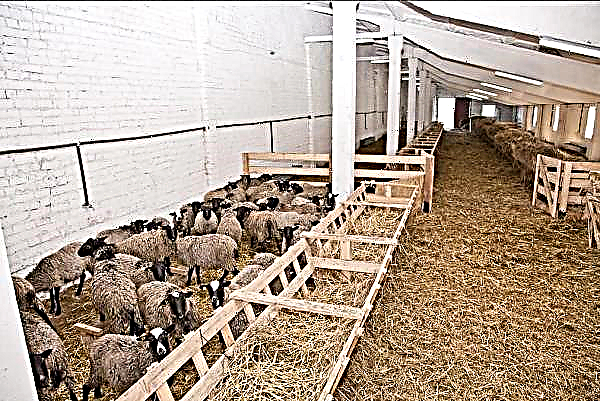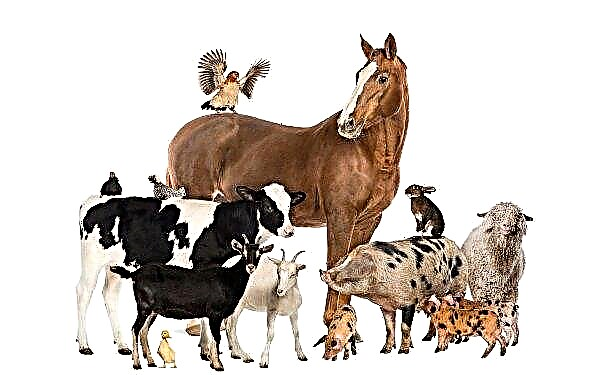In many garden plots, there is a place for growing redcurrant bushes. There are over 100 different varieties of this crop. Despite the fact that the variety Tatyana was bred relatively recently, it has already gained popularity among farmers due to its taste and high yields.
Origin of the variety
Variety of red currant Tatyana was bred in 2006. To create it, employees of the VIR “Polar Experimental Station” branch (Apatity) crossed the Kandalaksha and Krasnaya Viktoriya varieties. In 2007, Tatyana was included in the State Register of the Russian Federation for cultivation in the Northern Region. But this variety of currant is cultivated in almost all regions country.
Did you know? In ancient times, many bushes of red currant grew on the banks of the Moscow River. Therefore, the water artery in Russian epics is found under the name «Currant».
Botanical Description
Shrubs of the Tatyana variety are characterized by fast growth rates. Already in the first year after planting, the plant can reach 2 m in height. Crohn - slightly spreading. Shoots are erect, with a matte bark of a beige hue. On the surface of the branches there is a slight pubescence.
The kidneys are medium-sized, ovoid. Leaves of a three-lobed configuration, bright green. Small holes are present on the surface of the sheet plate. The upper part is glossy and the inside is slightly omitted. Flower inflorescences have a reddish-brown hue and a loose racemose shape. They are located on the shoots in groups.
Characteristic
The popularity of the variety of red currant Tatyana is due to a large number of advantages. This culture has large berries that can be seen at a distance. Resistance to frost and unpretentious care only adds to the popularity of the variety. A pleasant taste, in which sweetness prevails, is one of the main advantages of Tatyana currant.
Drought resistance, frost resistance
Based on the description of Tatyana redcurrant variety, its high resistance to drought can be noted. Plants are able to bear fruit, even if the ambient temperature reaches + 36 ° C. Watering should be moderate, as shrubs do not like waterlogged soil.
Frost resistance is very high. This is due to the fact that the variety was developed specifically for the northern regions of the country. The temperature to which the bushes are resistant is declared at -55 ° C.
Productivity and fruiting
Variety of red currant Tatyana is characterized by late ripening. Fruiting occurs 2 years after planting. Harvesting is carried out at the end of August. Yield indicators are another reason for the popularity of the crop. If you follow all the rules of agricultural technology, then from each bush you can collect up to 6 kg of high quality products. Beginners in the field of gardening receive 3-4 kg from each plant.
Did you know? The maximum benefit is characterized by currants grown in the north of the country. The colder the climate, the more vitamins in the fruits.
Berry size, taste
Description of berries:
- the form: rounded
- peel: bright red hue, covered with a waxy coating, so the effect of a glossy surface is created;
- fruit: collected in brushes of 10-15 pcs. in each;
- average berry mass: 0.5 g;
- pulp: dense, juicy.

The taste qualities of Tatyana currant variety are high - sweet, with acidity. After tasting events, this variety was assigned 4.5 points and 5 possible. Berries are resistant to cracking. Even after full ripening, they remain on the branches and do not fall. Products can not only be consumed fresh. They are ideal for homemade preserves, desserts and stewed fruit.
Advantages and disadvantages
- The main advantages of the described plant include:
- High yields.
- Does not need pollinators growing in the neighborhood.
- Resistance to sharp temperature drops.
- Developed immunity against diseases and pests.
- Pleasant taste of berries.
- The ability to transport products.
- Resistance to shedding.
- Universality of use.
- The disadvantages are as follows:
- Small berries.
- The need for regular pruning.
- High feed requirements.
Landing Features
In order for the bushes to bear fruit and give the necessary amount of harvest, it is necessary to plant them correctly at a constant place of growth. If you follow all the recommendations, you can increase the resistance of the culture to diseases and parasites. First of all, you need to choose high-quality seedlings and a seat. After that, determine the timing of landing, based on the region of residence.
Video: How to plant red currants
The timing
If we consider the optimal planting dates for the variety Tatyana, then they depend on the region of cultivation. In the northern regions of the country, planting should be carried out in late August or early September. This is necessary so that the plant takes root in the soil before frost. In the central and southern regions of the country, they begin landing at the end of September. The seedlings will have “enough” time for acclimatization, since in these regions frosts come late.
Conditions
Before planting, favorable conditions for this process must be taken into account. The optimum soil temperature is + 12 ° C. If it is lower, then the roots will not take root. The ambient temperature should be from + 15 ° C to + 18 ° C. This temperature range contributes to the rapid acclimatization of the bushes.
Choosing the right place
When choosing a suitable seat, the indicators of humidity and light should be considered. For planting, select sites that are located on the plain. Groundwater cannot come close to the surface of the earth or be at great depths. Optimum occurrence - 2 m. This will be enough so that in the event of severe drought, the roots draw moisture from groundwater. The distance between the bushes and protective structures should be 2 m. Shrubs of Tatyana redcurrant variety need lighted areas that are protected from direct sunlight. That is, planting must be carried out next to fruit trees or barriers.
Shrubs of Tatyana redcurrant variety need lighted areas that are protected from direct sunlight. That is, planting must be carried out next to fruit trees or barriers.
It is important to correctly prepare the place for landing. First, the plot is fertilized with humus (30 kg per 1 m²). After 2 days, it is dug up so that nutrients penetrate into the deeper layers of the soil. The plot can be poured with a small amount of water (20 l per 1 m²) so that the fertilizer is absorbed along with the liquid. It is recommended to make Nitrofoska (300 ml diluted in 10 l of water), the solution of which is distributed around the entire perimeter of the area where currants will be planted.
Berry shrubs better fruit on chernozems and loamy lands. If you live in a region with sandy soils, it is advisable to add peat (50 kg per 1 m²). The acid-base balance of the soil should not exceed pH 6. If the acidity level is high, then add a solution of lime (2 kg per 10 l of water). This volume is designed for 1 m² plot.
Selection and preparation of seedlings
High-quality planting material is the basis of the future harvest. When buying a seedling, consider the following features:
- absence of signs of the disease (white coating, red or purple spots). Their presence indicates that literally in 3-4 months the bush will die;
- optimal length of the root system (no more than 30 cm).
- age 1-2 years. Young planting material has strong immunity, which increases the chances of proper development.
In the process of preparing seedlings, it is necessary to disinfect them and stimulate growth processes. First, the roots of a young plant are immersed in a weak solution of potassium permanganate. Stand for 2 hours to destroy all bacteria that have accumulated on the surface. After that, you need to trim the long roots so that their length is 0.30 m.
The next stage in the preparation of planting material is soaking in a growth stimulator. It is necessary to dilute 300 ml of “Kornevin” in 10 l of water, and put the roots of the plant in the prepared solution. Soak the seedling for 3-5 hours, after which it is left to dry. When the solution is absorbed into the tissues of the plant, they begin the process of planting in a permanent place.Important! If you buy seedlings in nurseries, then the risk of acquiring a diseased plant or off-grade material is reduced.

Landing algorithm
Prepare the well in advance. They are dug at a distance of 2 m from each other. The size of the pit should be 50 × 70 cm. A solution of Nitrofoski (100 g per 10 l of water) is poured into the bottom.
Landing Stages:
- Vertically set the seedling in the center of the pit.
- Level the roots so that creases do not form.
- Sprinkle with a layer of soil and tamp. Such actions help to avoid the formation of voids at the roots.
- Pour 10 liters of water.

Care
Despite the resistance to drought, the bushes of the currant of the Tatiana variety respond poorly to the prolonged absence of watering. As a result, growth is slowed down in young shrubs, and productivity indicators are reduced in adults. Water the crop several times during the season:
- in the spring when active growth is observed;
- during the formation of inflorescences;
- during the formation and ripening of berries.
Under each bush, pour in less than 20 liters of warm water. For the northern regions of the country, this volume may be lower (about 15 liters). Watering should be carried out on special ditches. Around the bush, at a distance of 30 cm from the trunk, circular furrows are dug. Their depth should be 10 cm.
The mulching process is important for the development of shrubs. The protective layer, which is created using straw or fallen leaves, is able to protect the soil from moisture evaporation, and also contributes to the slow growth of weeds.
Loosening of the topsoil is carried out 2 times a month. This helps air and nutrients to better penetrate the root system. If the weeds are more than 7 cm, they must be removed immediately. Otherwise, pests will actively develop on their surface.
The formation of the bush is carried out 1 time in 2-3 years. When trimming, leave no more than 3 powerful shoots. The remaining branches are shortened to the ground level. Every year, in the spring, all damaged and dry branches are removed. During pruning, use sharp tools (pruning shears, saws) so as not to injure the plant unnecessarily.
The variety of redcurrant variety Tatyana has certain requirements for top dressing. Before flowering, it is necessary to pour 4 l of Nitrofoski solution (400 g per 10 l of water) under each bush. From June to August, with an interval of 2 weeks, a humus solution (3 kg per 10 liters of water) is added. The volume per 1 plant is 5 liters. At the end of September, they soil the soil under shrubs with 5 l of superphosphate solution (400 g per 10 l of water).
Breeding methods
There are several methods for propagating red currants. The first option is by dividing the bush. In autumn, you need to dig a developed bush. Remove all old shoots, and cut the young ones to a height of 25 cm. Using an ax, divide the plant into 3 parts. Each of them must have kidneys, otherwise fruiting will not materialize. In a hole with a depth of 50 cm, place a new plant. Sprinkle with soil and pour 10 liters of water.
The second method is propagation by cuttings. Separate from the adult bush annual shoots whose length is 15–25 cm. Make a small cut in the upper part of the branch (2 cm higher from the bud) and the lower (under the bud). Deepen the shoots into the soil (10-15 cm) under a slight slope. Above the ground, leave 3-4 kidneys. Water the landing site and cover with a layer of mulch. Within a few months, young shrubs will form, which must be transplanted to a permanent place.Video: How to propagate currants with cuttings
Winter preparations
Variety of red currant Tatyana does not need additional shelter for the winter. It is enough to place a layer of mulch around a bush 30 cm high and pour shrubs with Superphosphate solution in the autumn. In winter, snowdrifts will create a protective layer against frost.
Do the bush need pollinators
A variety of currant Tatyana belongs to self-fertile cultures. Therefore, it does not need additional pollinators. If you want to increase productivity by 1-1.5 kg from one bush, then you can plant other self-fertile varieties nearby. Such plants include Yadrennaya and Golden currants.
Diseases and Pests
Despite the developed immune system, Tatyana may be affected by powdery mildew, white spotting and anthracnose.
Prevention against diseases and pests is as follows:
- Inspection of the bushes for signs of damage.
- Compliance with the rules for landing and care.
- Processing plants with boiling water in the spring to destroy all larvae and bacteria.
To signs powdery mildew can be attributed to a white coating, which covers the entire surface of the bush. Topaz spraying (20 g per 5 l of water) and dusting with wood ash (200 g per 1 plant) help fight this disease. Symptoms white spotting are the appearance of brown spots on the leaves. In summer, they become lighter, and the edging - burgundy. The treatment of the disease consists in the treatment of Bordeaux liquid (10 g per 10 liters of water). Anthracnose manifests itself in brown spots whose diameter is 1 mm. After 2-3 weeks, they become voluminous and acquire a black color. The fight against the disease consists in processing a saturated solution of potassium permanganate.
Of the common pests, aphids, kidney moths, and firebills should be noted. Spraying with aphids is helped by spraying with preparations containing a high concentration of copper - Oksikhom (50 g per 5 l of water) or Kinmiks (100 g per 10 l of water). In the fight against moths, a solution of lime (100 g per 10 liters of water) is used. “Lepidocide” (20 g per 4 l of water) helps to eliminate the fire-bomb. All treatments against diseases and pests are carried out 2 times a month.

Harvesting and storage
Harvested gradually, as the berries ripen unevenly. The products are stacked in small containers, each of which should have no more than 1 kg of fruit. If you exceed the recommended rate, then during transportation, the product may let the juice and acquire a non-marketable appearance.
Berries should be stored in a cool room (from + 7 ° C to + 15 ° C). It is impossible that sunlight hit the tanks. Shelf life of fresh berries is 3 months. To increase it, you can put the products in the freezer. There berries are stored for 6-8 months. If preservation is made from the fruits of currant, then the shelf life will increase to 2-3 years.
So, now you know how to plant and grow Tatyana currants. There is nothing complicated in this, if you adhere to all these recommendations. Even "beginners" in gardening annually collect a large amount of delicious, vitamin-rich products that can be stored for their own purposes or put up for sale, as the marketability of Tatyana fruits is high.

